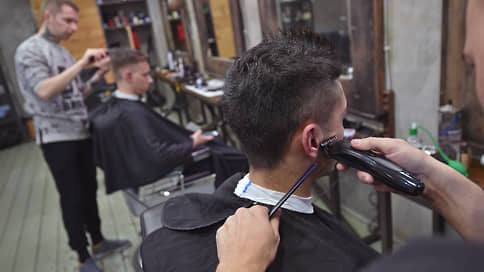The story of the beard
[ad_1]

The barbershop segment turned out to be resistant to the permanent crisis provoked first by the pandemic and then by the military operation in Ukraine. In two years, the number of such establishments in Russian cities increased by 54%. One of the reasons for this growth is the development of this business on a franchise model, which has increased interest in it from representatives of small and medium-sized businesses. They began to open barbershops in the economy segment, which is easier to survive the crisis.
Over the past two years, the number of barbershops in the 15 largest cities of Russia has grown by 54%, to 3.5 thousand points, calculated at the request of Kommersant in the 2GIS geoservice. Novosibirsk (+87%), Ufa (+71%), Rostov-on-Don (+70%), St. Petersburg (+65%) and Kazan (+59%) became the leaders in terms of growth in the number of barbershops during this time. During the pandemic, the dynamics were much more modest: from September 2019 to September 2020, there were 17% more barbershops in large cities.
2GIS analysts attribute the growth in the number of barbershops to the development of chain franchises. If at first businessmen opened mainly salons of their own brands, now they are investing in franchise outlets, Gevorg Vopyan, owner of the FIDEL chain, confirms. There is a large selection of franchises in this segment and it is possible to easily build a model for franchisees with good financial performance, Anton Belykh, CEO of DNA Realty, notes. According to Franshiza.ru expert Anna Rozhdestvenskaya, now about 35% of the total number of outlets operate according to the federal franchising model, the rest operate without a franchise or are local local networks.
In Moscow, the barbershop format has already penetrated the market, and in the regions, expansion has only just begun the last couple of years, says Vasily Mikhailov, founder of the Superman barbershop network. Aleksey Lokontsev, the owner of the TopGun barbershop network, believes that now all hairdressers “give themselves the status of barbershops, while not being such.”
When the barbershop format was just beginning to develop in the Russian market, salons of the high price segment were mainly opened, recalls Vasily Mikhailov. But the Russians did not regularly go there because of the high prices, which stopped the growth in the number of expensive barbershops, and some began to close: haircuts costing more than 1.5 thousand rubles. can afford no more than 2.5% of the population, he continues. The pandemic was superimposed on this, the consumer began to save money, and then salons of the middle and economy segments began to open, since for haircuts worth up to 500 rubles. 85% of men are oriented, adds Mr. Mikhailov.
In the retail real estate market, barbershops turned out to be the most resistant to both the pandemic and the current crisis, Anton Belykh notes. Despite the high competition in Moscow, it is sometimes extremely problematic to sign up, although in some residential complexes there are two or three outlets, he continues. “The demand for this format and good business margins continue to attract businessmen, and we regularly receive requests to find premises for the opening of new salons,” he says.
In addition, the entry threshold in the segment is small. On average, launching a barbershop will require from 2 million rubles, and the payback period will be from 14 months, Anna Rozhdestvenskaya calculated. Gevorg Vopyan talks about 3.5-5 million rubles. and payback periods of 24-36 months.
The main target audience of buyers of barbershop franchises are young men, so now this is one of the most vulnerable segments of franchising, Anna Rozhdestvenskaya believes. In her opinion, in the near future, the demand for opening new barbershops will fall until the geopolitical situation stabilizes and the active part of the population returns from abroad. The format of the hairdressing business has not changed for more than half a century, Vasily Mikhailov objects, but now the process of modernization of this segment has been launched: old format salons will gradually leave the market.
[ad_2]
Source link





